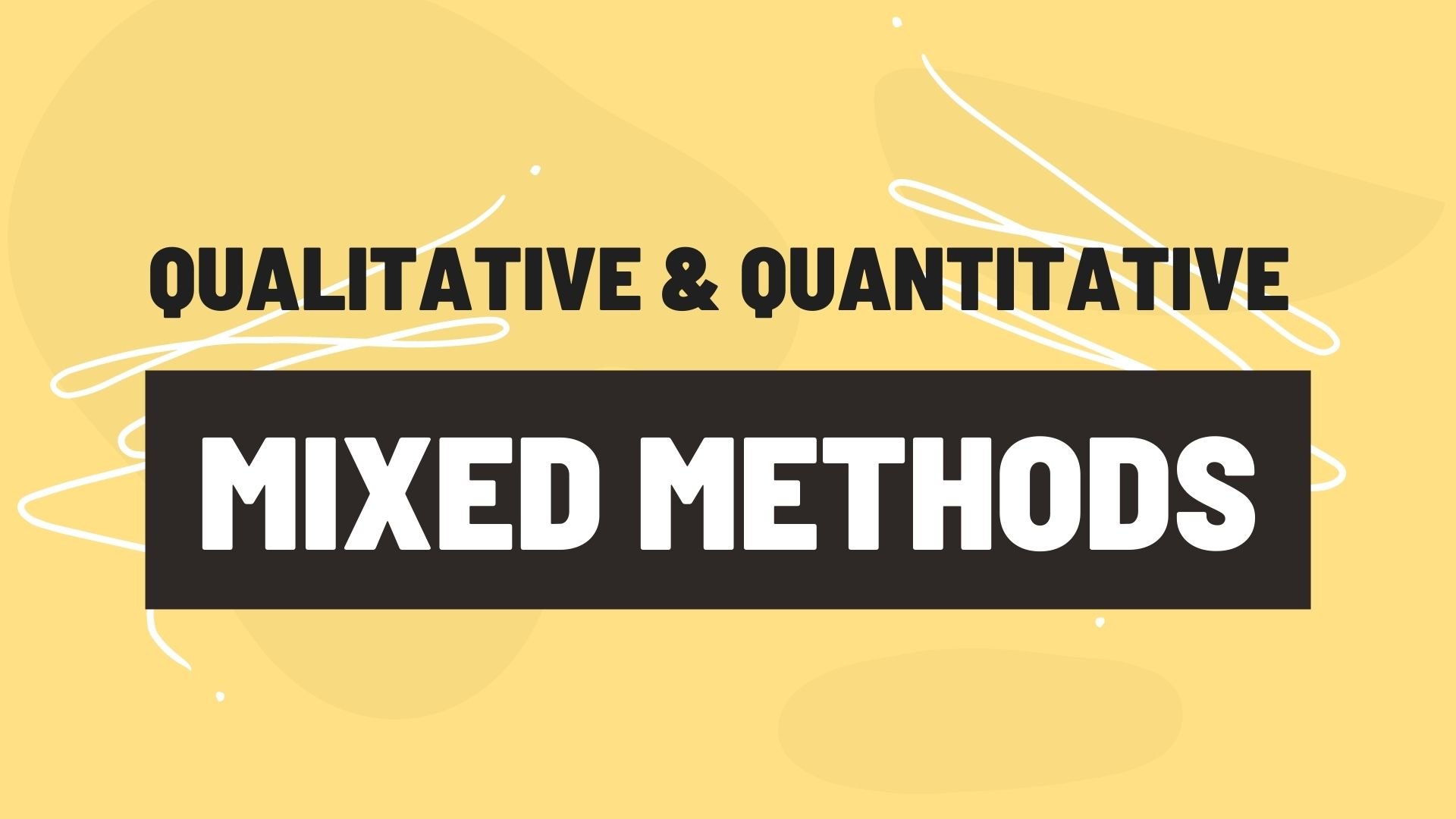Qualitative Quantitative Mixed Methods
What is mixed methods research?
Mixed methods research is a research method that combines and integrates qualitative and quantitative research methods in a single research study. It involves collecting and analyzing qualitative and quantitative data to understand a phenomenon better and answer the research questions.
The central premise of using mixed methods research is that it makes the most of the strengths of each data type while neutralizing their weaknesses. Researchers combine qualitative and quantitative methods to expand their evidence, improve the credibility of their findings, and illustrate the results from one method with the results from the other one.
What are the core mixed methods research designs?
The three core mixed methods research designs are convergent design, explanatory sequential design, and exploratory sequential design. Let’s take a look at these three types of mixed methods research designs:
1. Convergent design
Convergent design is a type of mixed methods research in which you collect quantitative and qualitative data simultaneously and analyze them separately. After the analysis, you then combine or compare the results to draw a conclusion. Convergent design is used when there is a need to compare statistical results with qualitative findings to understand the research problem better. Researchers also use this mixed qualitative and quantitative research methods design to validate and illustrate qualitative findings with quantitative results.
2. Explanatory sequential design
Explanatory sequential design is a type of mixed methods research in which you first collect and analyze quantitative data and then follow the results up with a qualitative phase. In this approach, researchers implement the qualitative phase to explain initial quantitative results in more depth.
3. Exploratory sequential design
Exploratory sequential design is a type of mixed methods research design in which you collect and analyze qualitative data and then follow up your results with a quantitative phase. This mixed qualitative and quantitative research methods design aims to explore a phenomenon before deciding which variables you need to measure quantitatively.
What are the steps for conducting mixed methods research?
There is no clear-cut procedure for conducting a study using mixed methods. However, you can conduct mixed methods research by following the steps below:
Determine whether mixed methods research is appropriate
The first step is to determine whether mixed methods research is appropriate for answering your questions and offer the best kind of evidence you need for your research study.
Determine your purpose
Determine the purpose you want to achieve by using mixed methods research design. Is it to use the results from one data type to corroborate, expand, develop, or complement the other?
Select the most appropriate design
Select the most appropriate design out of the three types of mixed methods research designs.
Convergent design is suitable when you need both qualitative and quantitative data, have limited time to collect the data, and must gather the required data in one visit.
Explanatory design is appropriate if the research problem is quantitatively oriented and the variables and instruments required for the research are available.
Exploratory design is best when the variables are unknown and the instruments needed are not available. This is also the best mixed methods research approach to use if there is no guiding theory for the study.
Collect qualitative and quantitative data.
Collect the qualitative and quantitative data you’ll analyze. Check our our guide to qualitative methods to learn about different ways to collect qualitative data.
Analyze the collected data.
Analyze the collected data. You can use the Delve qualitative data analysis tool to quickly and rigorously analyze your qualitative data. You can then export the data into spreadsheets to analyzed it along with your quantitative data.
Write the research report
Validate and interpret the data and write your research report.
Mixed methods research examples
Here is a real world mixed methods research example to help you better understand this research approach.
In Newman, Shell, Ming, Jianping, and Mass’ paper on adolescent alcohol use, the researchers used the mixed methods research approach to understand the characteristics of adolescents who drink and don’t drink alcohol. The researchers utilized exploratory sequential design. They started by collecting and analyzing qualitative data sourced through in-depth interviews, discussions, and observations to develop a clear view of the behaviour from the participants’ perspective.
Then the researchers used the qualitative findings to design survey instruments used to collect quantitative data to explore the behavior in more detail and with a bigger sample. Using mixed methods research, the researchers gained a better understanding of this health-related behaviour and provided insights on how to reduce alcohol-related risks among young adults.
Qualitative analysis doesn't have to be overwhelming
Take Delve's free online course to learn how to find themes and patterns in your qualitative data. Get started here.

Advantages of mixed methods research
The main benefit of using mixed methods research is that you get the best of both qualitative and quantitative research methods. This approach allows you to use the strength of one data type to mitigate the weakness of the other.
Mixed qualitative and quantitative research methods are less tied to established research paradigms, so they are flexible to use.
Mixed methods research allows you to tackle a broad range of research questions. This is because you are not limited to a research method.
This approach helps researchers get stronger evidence to collaborate their findings.
Mixed methods research gives researchers a complete understanding of the topic or phenomenon under study.
Disadvantages of mixed methods research
Mixed methods research requires collecting and analyzing two types of data, so it is labor-intensive and time-consuming.
Results from mixed methods research can be difficult to interpret if you get different results from the two data types.
Mixed methods research requires you to understand multiple methods and how to combine them appropriately.
Try Delve Qualitative Analysis Tool
The Delve qualitative analysis tool can streamline the code for your qualitative data and help you to analyze data. Start a free trial of Delve today!
References:
Newman, I; Shell, D; Ming, Q; Jianping, X; Maas, M. (2006). Adolescent Alchohol Use: Mixed Methods Research Approach. Educational Psychology Papers and Publications.
Johnson, R; Schoonenboom, J. (2017). How to Construct a Mixed Methods Research Design. Kolner Z Soz Sozpsychol.
Molina-Azorin, F. (2016). Mixed methods research: An opportunity to improve our studies and our research skills. European Journal of Management and Business Economics.
Cite this blog post:
Delve, Ho, L., & Limpaecher, A. (2022a, March 23). Qualitative Quantitative Mixed Methods https://delvetool.com/blog/mixedmethods
